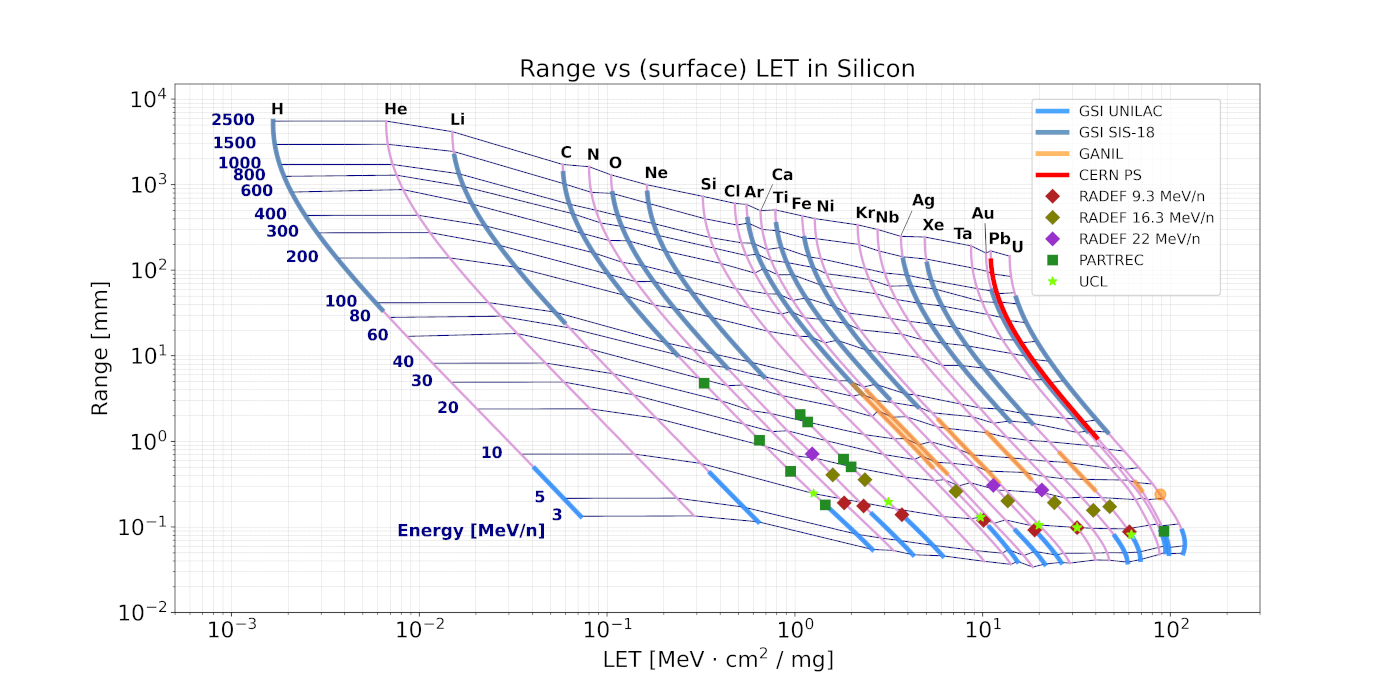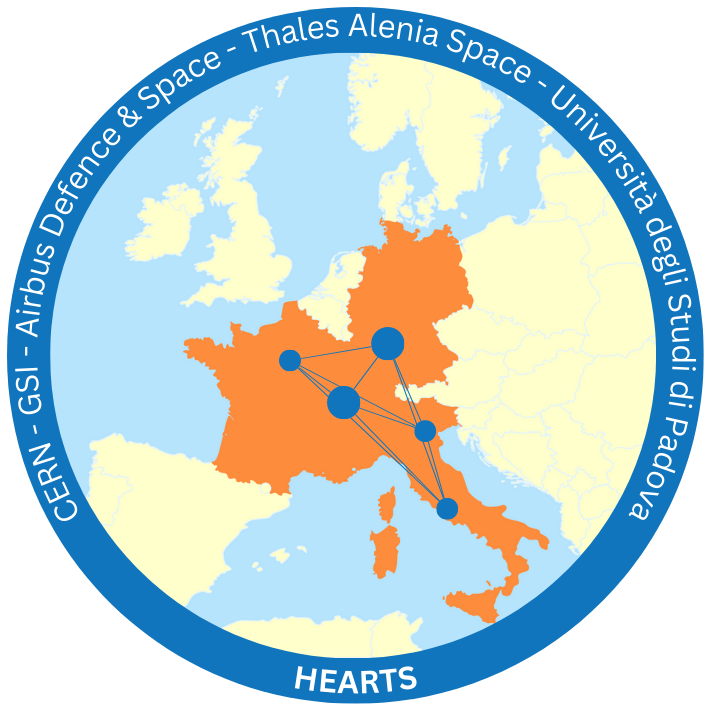HEARTS (High Energy Accelerators for Radiation Testing and Shielding) aims at developing and establishing a European infrastructure for research and industrial access to high-energy heavy ion facilities for the fields of radiation effects in electronics, shielding and radiobiology. Only with the establishment of this infrastructure, European non-dependency for access to space would be ensured.
HEARTS will bring together the two main high-energy ion accelerator infrastructures (CERN and GSI) as well as the two main space companies in Europe (Airbus Defence and Space and Thales Alenia Space) and a top-level academic institution (Università degli Studi di Padova). Together, they will work towards providing high-energy ion facilities whose beams provide an optimal tool to reproduce the effects of galactic cosmic rays. This will trigger research and enable breakthroughs that will allow employing highly advanced electronic devices in space (including edge computing, artificial intelligence and quantum technology) as well as achieving decisive knowledge in shielding properties and radiobiology for astronauts working in deep space missions and planetary surfaces.
Reference:
M. A. Fraser et al., “Feasibility of Slow-Extracted High-Energy Ions From the CERN Proton Synchrotron for CHARM”, in Proc. IPAC'22, Bangkok, Thailand, Jun. 2022, pp. 1703-1706. doi:10.18429/JACoW-IPAC2022-WEPOST012




